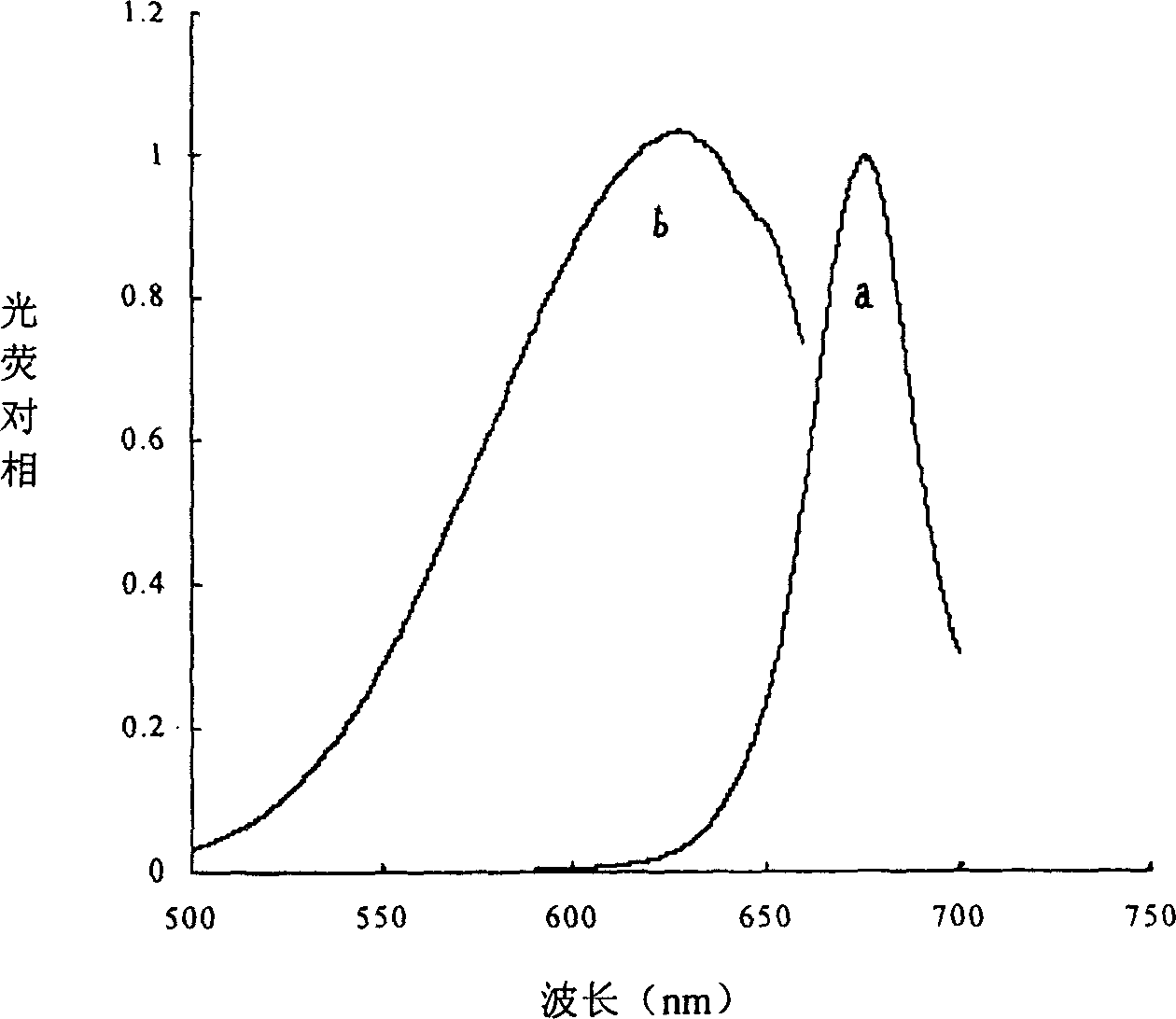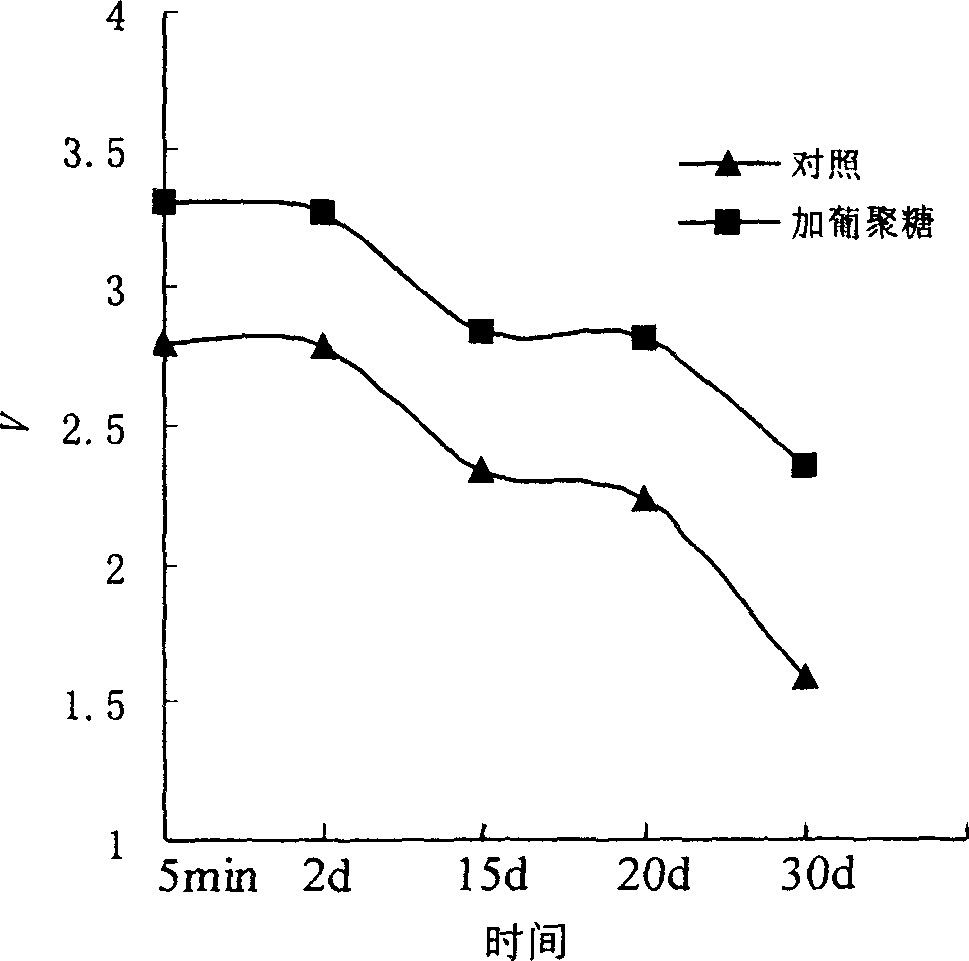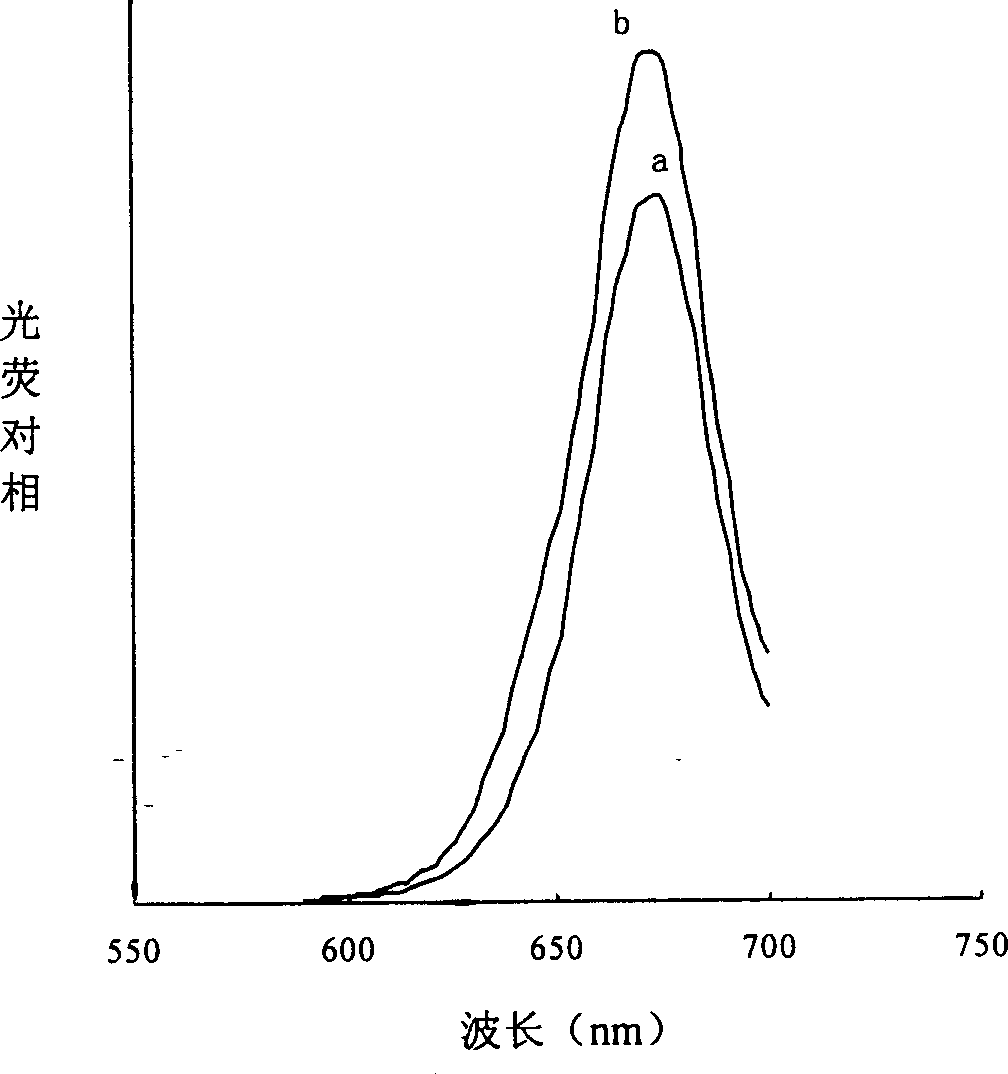Stabilization technology for intact phycobilisomes of red algae and blue algae
A technology of phycobilisomes and red algae, which is applied in the field of marine biology, can solve the problems of easy dissociation, difficulty in long-term storage of phycobilisomes, and restrictions on the application of phycobilisomes, achieving good application prospects
- Summary
- Abstract
- Description
- Claims
- Application Information
AI Technical Summary
Problems solved by technology
Method used
Image
Examples
Embodiment 1
[0026] Embodiment 1, the stabilization technique of the complete phycobilisome of cyanobacteria, the method is as follows:
[0027] 1. Crushing of raw materials: 0.8g of fresh Spirulina platensis, dissolved in 16mL 1mol L -1 In the disodium hydrogen phosphate-potassium dihydrogen phosphate buffer solution (pH=6.9), the cells were disrupted by ultrasonic wave at a power of 12-15W, and the disruption was performed 5 times, 1.5 min each time, with an interval of 2 min.
[0028] 2. Dissociation of phycobilisomes: add 2.0% volume percentage concentration of detergent Tween X-100 to the broken algal bodies, and stir slowly for 1 hour to 1.5 hours at room temperature to make phycobilisomes dissociate from the thylakoid membrane After dissociation from the upper part, centrifuge at 13000rpm~15000rpm for 1~2 times to remove the surface detergent Tween X-100, chlorophyll and cell debris at the bottom, and collect the solution in the middle of the centrifuge tube, which is the crude phyc...
Embodiment 2
[0035] Embodiment 2, as described in Embodiment 1, the difference is:
[0036] Step 4 Stability protection of complete phycobilisomes: use formaldehyde cross-linking technology to covalently cross-link phycobilisomes, take the complete phycobilisomes solution of the above step 3, and use 0.75mol / L disodium hydrogen phosphate- Potassium dihydrogen phosphate buffer solution (pH = 6.98) adjusted the protein concentration to 0.28 mg / mL, then took 1.8 mL of the phycobilisome solution, and slowly added 0.75 mol / L disodium hydrogen phosphate-diphosphate diphosphate while shaking. 0.2 mL of concentrated 4% (W / V) formaldehyde solution prepared in potassium hydrogen buffer solution until the formaldehyde concentration is 0.4% (W / V), and keep warm at 20°C for 12h. The resulting phycobilisome solution was diluted with deionized water to a low ion concentration of 0.1mol / L, incubated at 20°C for 30 days, and its fluorescence spectrum was measured. The results showed that the stabilized Ph...
Embodiment 3
[0038] Embodiment 3, the stabilization technology of the complete phycobilisome of red algae, the method is as follows:
[0039] As described in Example 1, the difference is:
[0040] The raw material for step 1 is 0.9 g of the single-celled red alga Porphyrococcus, dissolved in 18 mL of 1mol L -1 In the disodium hydrogen phosphate-potassium dihydrogen phosphate buffer solution (pH=6.8), the cells were disrupted by ultrasonic wave at a power of 12-15W, and the disruption was performed 6 times, each time for 2 minutes, with an interval of 3 minutes.
PUM
| Property | Measurement | Unit |
|---|---|---|
| ionic strength | aaaaa | aaaaa |
Abstract
Description
Claims
Application Information
 Login to View More
Login to View More - R&D
- Intellectual Property
- Life Sciences
- Materials
- Tech Scout
- Unparalleled Data Quality
- Higher Quality Content
- 60% Fewer Hallucinations
Browse by: Latest US Patents, China's latest patents, Technical Efficacy Thesaurus, Application Domain, Technology Topic, Popular Technical Reports.
© 2025 PatSnap. All rights reserved.Legal|Privacy policy|Modern Slavery Act Transparency Statement|Sitemap|About US| Contact US: help@patsnap.com



